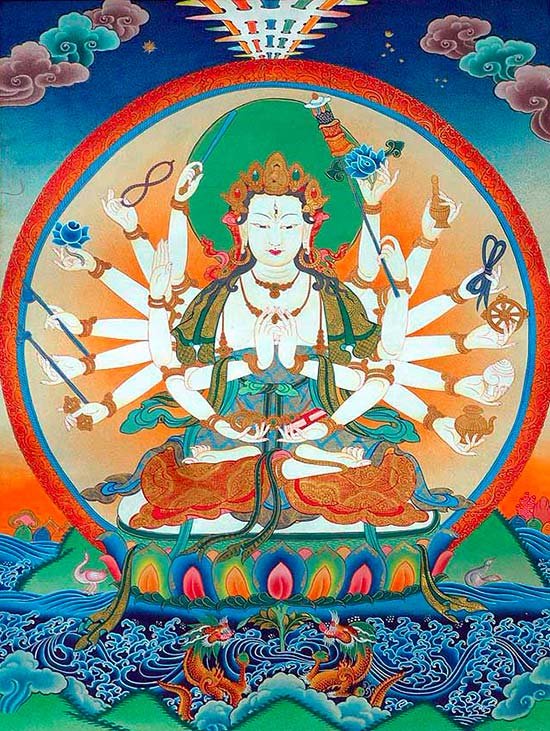Maha Prajnaparamita Sastra
by Gelongma Karma Migme Chödrön | 2001 | 941,039 words
This page describes “the various kinds of morality (shila)” as written by Nagarjuna in his Maha-prajnaparamita-sastra (lit. “the treatise on the great virtue of wisdom”) in the 2nd century. This book, written in five volumes, represents an encyclopedia on Buddhism as well as a commentary on the Pancavimsatisahasrika Prajnaparamita.
IV.1. The various kinds of morality (śīla)
There are two kinds of morality (śīla):
- impure morality (sāsravaśīla);
- pure morality (anāsravaśīla).
Firstly, impure morality is of two kinds: i) the morality of discipline (saṃvaraśīla); ii) the morality connected with the meditative stabilizations (samādhisahāgataśīla).[1]
During his early practices, the yogin recollects these three kinds of morality. Having practiced all three, then he recollects only the pure morality (anāsravaśīla).
The morality of discipline (saṃvaraśīla) prevents the sins (pāpa) and corruption from gaining power. The morality of trance and concentration dissipates all the negative emotions (kleśa). Why?
When one has attained the inner happiness (adhyātmasukha) [of the meditative stabilizations], one no longer seeks worldly happiness (lokasukha). Pure morality (anāsravaśīla) uproots the roots of sins (pāpa) and negative emotions (kleśa).
Question. – Why recollect the moralities?
Answer. – As I have said above (p. 1393F) in regard the recollection of the Saṃgha, the Buddha is like the king of physicians (vaidyarāja), the Dharma is like good medicine (bhaiśajya), the Community is like the nurse (glanopasthāyaka) and morality is like submitting to the medical regime. The yogin says to himself: “If I do not fall in line with this obligation, the Three Jewels (triratna) will be of no use to me. If the guide (nāyaka) shows the good path but the traveler does not use it, that is not the fault of the guide.”[2] This is why I should recollect morality (śīla).”
Furthermore, morality is the support (adhiṣṭhāna) of all good dharmas. Just as the hundred grains and the medicinal plants grow depending on the earth, in the same way, observing pure morality produces great profound concentrations and the knowledge of the true nature (bhūtalakṣaṇa). It is also the foremost gate (prathamadvāra) for monastics (pravrajita), the stick (daṇḍa) on which all monastics lean, the primary cause and condition (hetupratyaya) of reaching nirvāṇa (nirvāṇādhigama). As it is said: “Thanks to keeping morality, the mind is free of regret (kaukṛtya), and finally deliverance (vimukta), nirvāṇa, is attained.”
Footnotes and references:
[1]:
Cf. Kośakārikā, IV, 13:
Avijñaptis tridhā jñeyā saṃvarāsaṃvaretarā |
saṃvaraḥ prātimokṣākhyo dhyānajo ’nāsravas tathā ||
[2]:
The guide is simply the one who indicates the path (mārgakhyāyin): it is not up to him whether one follows his advice or not. Comparison already used by the Majjhima, III, p. 5–6.
